- Quick, Easy, & Hassle-Free
- UK Based
- GPhC Regulated
- Secure Checkout
- Express Delivery
Quick, Easy, & Hassle-Free
UK Based
GPhC Regulated
Secure Checkout
Express Delivery
No Appointments
No Embarrassment
No Hassle!
No Appointments
No Embarrassment
No Hassle!
Acid Reflux is a digestive disorder caused by a weakened Lower Oesophageal Sphincter (LES), allowing stomach acid to flow into the oesophagus and cause irritation. Symptoms include heartburn, a bitter taste in the throat, difficulty swallowing, and chest pain, highlighting the importance of effective management and treatment.
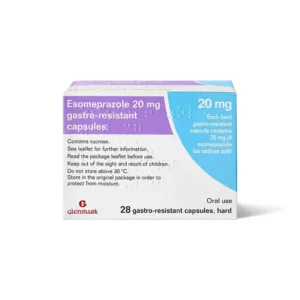
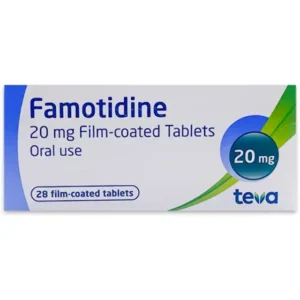
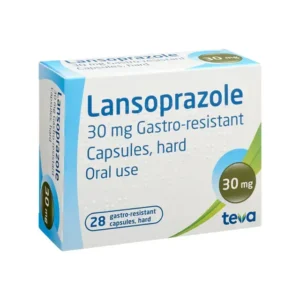
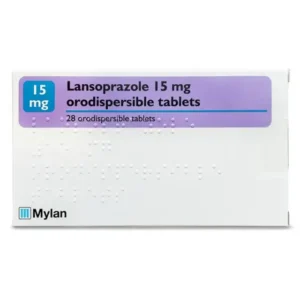
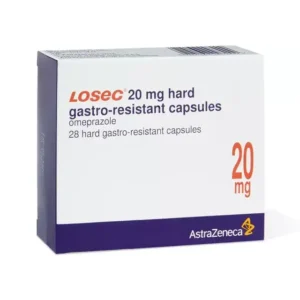
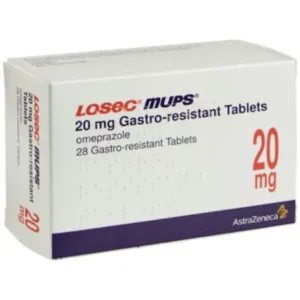
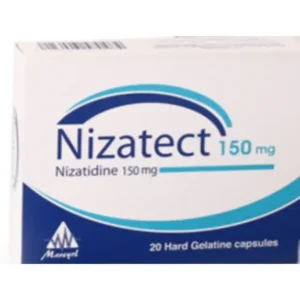
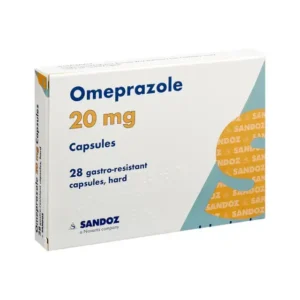
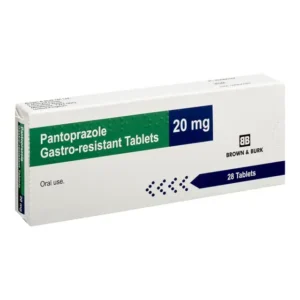
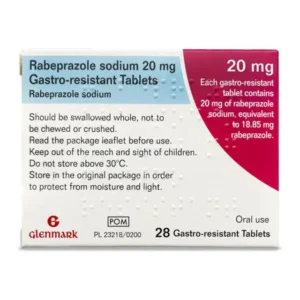
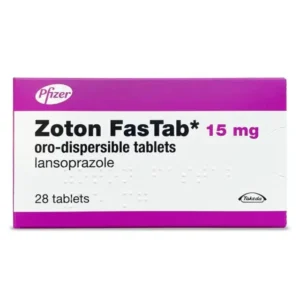
Acid reflux is a digestive disorder characterised by the regurgitation of stomach acid into the oesophagus. This occurs due to the malfunctioning or weakening of the Lower Oesophageal Sphincter (LES), a muscular valve that normally acts as a barrier between the oesophagus and the stomach.
When the LES fails to close properly, stomach acid flows back up, causing irritation, inflammation, and discomfort in the oesophageal lining.
Common symptoms of acid reflux include heartburn, an unpleasant bitter taste in the throat, difficulty swallowing, and chest pain.
Understanding the causes, symptoms, and available management strategies is crucial for individuals affected by acid reflux to seek appropriate treatment and alleviate its impact on their daily lives.
Acid reflux, or heartburn, is an unpleasant burning feeling felt behind the breastbone that is often accompanied by a sour or bitter taste in the back of the throat.
It is caused by stomach acid leaking up into the gullet (oesophagus). If this occurs regularly it is known as Gastro-Oesophageal Reflux Disease (GORD). If left untreated, the lining of the throat can be eroded, and ulcers can develop.
Nearly everyone will suffer with acid reflux at some point, in most cases it is mild and soon passes, however, it can be common for symptoms to be frequent or severe enough to affect quality of life.
It is estimated that GORD occurs in 1 in 5 people and although most commonly observed in males aged over 40 it can affect people of all ages, including children.
Acid reflux occurs when the circular ring of muscle known as the Lower Oesophageal Sphincter (LES) at the junction between the oesophagus and stomach does not close completely.
This valve normally prevents food and stomach acid from leaking up into the oesophagus, however, when it does not tighten properly, acid is allowed to travel upwards. Unlike the stomach, the oesophagus does not have a protective mucus lining and therefore the acid causes irritation.
The main symptoms of acid reflux are heartburn (a burning feeling which rises from the abdomen or lower chest up towards the neck) and an unpleasant bitter taste in the throat caused by stomach acid.
Less commonly, it can also cause; burping, a recurring cough/hiccups that are particularly worse at night, a hoarse voice, gum problems, bad breath, a feeling of a lump in the throat, indigestion, bloating, belching and nausea.
Severe chest pain can develop in some cases which can be mistaken for a heart attack.
Symptoms are often worse after eating, when lying down or when bending over.
It is often unclear why the lower oesophageal sphincter leaks, but certain factors increase the risk. These include:
Simple lifestyle changes may be all that is required to stop or reduce acid reflux.
You SHOULD:
If the above steps offer little or no relief, you may need an over-the-counter medication such as an antacid or alginate to ease your symptoms.
Antacids are alkaline liquids or tablets that neutralise the acid produced in the stomach; they provide fast relief from symptoms but are often short acting so repeat doses may be required.
Alginates form a ‘raft’ that floats on top of the contents of the stomach, preventing acid from escaping back up into the oesophagus. Many antacid preparations also contain an alginate as a combination product with dual action.
Antacids and alginates can be used ‘as required’ for mild or infrequent bouts of heartburn but long-term, continuous use is not recommended.
They are best taken when symptoms occur or are expected i.e. with food or soon after meals and at bedtime. They tend to remain in the stomach for longer and thus act for longer when taken with food. Antacids should preferably not be taken at the same time as other drugs as they can impair absorption.
What treatment options does PrescriptionPad offer?
PrescriptionPad offers two main groups of medication which both act to suppress stomach acid production and effectively reduce the symptoms of acid reflux.
The two classes offered are Proton Pump Inhibitors (PPIs) and Histamine H2-Receptor Antagonists. These are discussed in more detail below.
Proton Pump Inhibitors (PPIs)
Proton Pump Inhibitors reduce the amount of acid made by your stomach.
They are commonly used to treat acid reflux and ulcers of the stomach and part of the gut called the duodenum.
PPIs inhibit gastric acid secretion by blocking the hydrogen-potassium adenosine triphosphatase enzyme system (the proton pump) of parietal cells that line the stomach.
This can help to prevent ulcers from forming or assist the healing process. By decreasing the amount of acid, they can also help to reduce acid reflux-related symptoms such as heartburn.
Generally, PPIs are well absorbed and provide quick relief for some problems such as acid reflux. However, if you are taking them for other reasons, such as to heal an ulcer, it may take longer for the medicines to have an underlying effect.
PPIs start to suppress acid production within 1-2 hours of taking the first dose and build to a maximum effect after 2-4 days.
PPIs have had a big impact on the quality of life of many people with acid reflux and gastric ulcers since they first became available in the 1980s. They are well tolerated and are commonly prescribed.
Most people who take a proton pump inhibitor do not develop any side-effects. However, side-effects do occur in a small number of users. The most common side-effects are:
PPIs may not be suitable for some people, such as those with certain severe liver problems. Breastfeeding and pregnant women should avoid taking PPIs apart from Omeprazole which is deemed to be safe. A full list of individuals who should not take a PPI is included in the Patient Information Leaflet (PIL) supplied in the medication packet. If you are prescribed or purchase a PPI, please read this leaflet to be sure you are safe to take it.
If you are taking antacids, you should try to avoid taking them at the same time as other medication, including PPIs. This is because antacids can affect how well your medication is absorbed.
PPIs include; Omeprazole, Lansoprazole, Esomeprazole, Pantoprazole and Rabeprazole.
Histamine H2-Receptor Antagonists
H2-Receptor Antagonists inhibit the production of acid in the stomach and can provide up to 12 hours relief from the symptoms of acid reflux.
PPIs are used as a first line treatment as they tend to work better at reducing stomach acid, however, those that do not have a positive response to a PPI or suffer with side effects may be better suited to a Histamine H2-Receptor Antagonist.
Histamine is a chemical that is naturally produced by certain cells in the body, including cells in the lining of the stomach called EnteroChromaffin-Like Cells (ECL Cells). Histamine released from ECL Cells stimulates the acid-producing parietal cells in the stomach lining to release acid. H2-Receptor Antagonists prevent this stimulation thus reducing the amount of acid produced and the resulting reflux symptoms.
H2-Receptor Antagonists are generally well absorbed and most people who take them do not suffer any ill effects. The most common side-effects are; stomach pain, constipation, nausea and skin rash.
H2-Receptor Antagonists may not be suitable for people with kidney problems or for those women who are pregnant or breastfeeding. A full list of side effects, possible interactions and people who should not take these medications is included with the Patient Information Leaflet (PIL) supplied in the medication packet. If you are prescribed or buy an H2-Receptor Antagonist, please be sure to read this to ensure you are safe to take it.
H2-Receptor Antagonists include: Ranitidine, Cimetidine, Nizatidine and Famotidine.
It should be noted that most people with acid reflux will not develop any complications, however, the below conditions can occur in certain instances.
Scarring and narrowing (Stricture) – if you have severe and long-standing inflammation it can cause a stricture of the oesophagus. This is uncommon.
Barrett’s Oesophagus – in this condition the normal cube-shaped cells that line the lower oesophagus become elongated. The changed cells are more prone than usual to becoming cancerous. About 1-2 people in 100 with Barrett’s Oesophagus develop cancer of the oesophagus.
Cancer – your risk of developing cancer of the oesophagus is slightly increased compared to the normal risk if you have long-term acid reflux.
You should tell your doctor if your condition worsens despite treatment or if you develop any of the following symptoms which could indicate a more serious underlying issue:
If medication does not help or your symptoms are severe, a GP may refer you to a specialist for:


The questionnaire consists of simple questions regarding your general health and the treatment requested. The online assessment is straightforward and completely private and confidential.
Once your request has been approved by our prescriber and payment has been received, your treatment is then dispensed, packaged, and posted by our regulated pharmacy partner. Your order will arrive as quickly as the next day depending on your selected delivery option.
You can be confident that your treatment will be 100% genuine, safe, and effective, as we only use medications procured from licensed manufacturers and trusted UK wholesalers.
Rest assured that your treatment will be delivered in plain packaging for complete discretion.
Our fully accredited and qualified UK prescriber then screens your completed medical questionnaire and assesses your suitability for treatment. If the prescriber has any additional questions or concerns, they will contact you directly for clarification.
Provided that the prescriber is satisfied that the treatment is appropriate, the repeat request will be approved, and a supply price provided. In the event that your request is refused, you will be informed of the reason and given referral advice.
Once your order has been approved by our prescriber, your treatment is then dispensed, packaged, and posted by our regulated pharmacy partner. Your order will arrive as quickly as the next day depending on your selected delivery option.
You can be confident that your treatment will be 100% genuine, safe, and effective as we only use medications procured from licensed manufacturers and trusted UK wholesalers.
Rest assured that your treatment will be delivered in plain packaging for complete discretion.
A straightforward medical questionnaire acts as a replacement to the conventional face-to-face appointment. This type of consultation process is quick and should only take around five minutes to complete.
The questionnaire consists of simple questions regarding your general health and the specific condition selected. Questions are easy to understand and similar to those that you would be asked during a GP appointment.
The online assessment is completely private and confidential and is conducted with the same professionalism and safety standards as you would expect from a regular appointment but without the need for an awkward or embarrassing face-to-face consultation.
When the questionnaire has been completed, you can add your chosen treatment to your basket and complete our secure checkout process.
Our fully accredited and qualified UK prescriber then screens your completed medical questionnaire and assesses your suitability for treatment. If the prescriber has any additional questions or concerns, they will contact you directly for clarification.
Provided that the prescriber is satisfied that the treatment is appropriate, the order will be approved, and a free private prescription issued for dispensing. In the event that your order is refused, you will be informed of the reason and given referral advice.
Select the condition that you require treatment for from our extensive list.
Detailed information, guidance, and advice about the selected condition and associated medications are clearly provided on our website.
When you are ready, simply click through to commence the online consultation process.